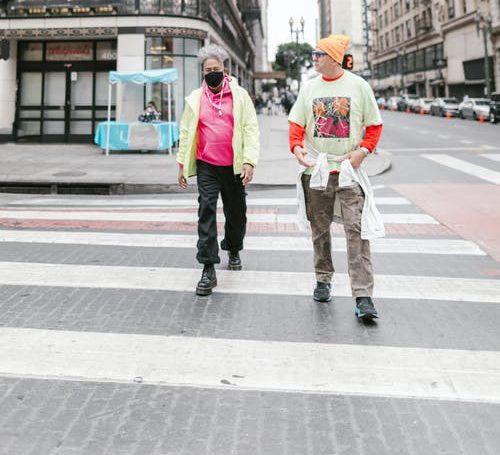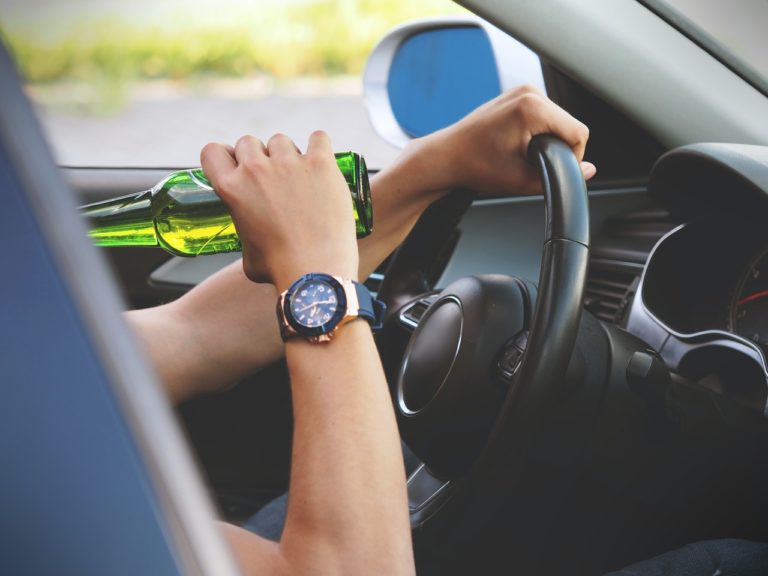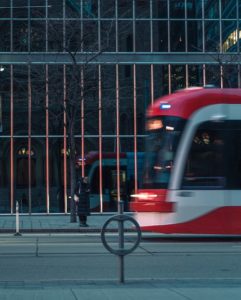
The National Highway Traffic Safety Administration (NHTSA) released a shocking report on pedestrian deaths for 2020. The administration said that 2020 saw a 7.2 percent increase in pedestrian deaths from the year before, hitting a high of 38,680 fatalities.
These were found to be the main causes of pedestrian accidents: driver intoxication, driver distraction, road design, speed, and road construction sites.
Main Causes of Pedestrian Accidents: Overview
Here are some of the facts related to pedestrian fatalities in traffic collisions:
2020 saw 38,680 pedestrian fatalities
A PennDOT report shows that In Pennsylvania, 146 pedestrians were killed
New data from Governors Highway Safety Association (GHSA) stated that in almost 50 percent of the pedestrian fatalities, either the driver or pedestrian was under the influence of alcohol.
The GHSA’s report projects that distracted driving factors such as speeding, drinking and driving, and as well as construction issues are becoming the important factors during the COVID-19 pandemic.
- Intoxication: The NHTSA places focus on pedestrian intoxication, seeming to suggest that this is more of a factor in pedestrian deaths than driver intoxication. Nevertheless, being under the influence can impair cognitive functions and put everyone at risk for an accident. So whether it is as a pedestrian or driver, intoxication is the most important factor contributing to driving-related accidents and pedestrian accidents.

- Driver Distraction: The issue of distracted pedestrians is becoming a major problem in the U.S. as electronic devices like smartphones grow in popularity. A CNNHealth article, for example, reported that headphone use among pedestrians has contributed to a significant amount of walking deaths. With that said, a driver has to manage their vehicle and surroundings at all times to account for these hazards. The NHTSA report did not recognize the role distracted driving plays in pedestrian fatalities but the epidemic of distracted driving is claiming more and more lives every year.
- Road Design: It is being widely argued that many recent pedestrian deaths are occurring on arterial roadways, which are roads designed for speeding traffic. These arterial roadways do not have much aid in a pedestrian’s travels, let alone bicyclists and the disabled.
- Speed: Speeding is one of the largest factors in a pedestrian death situation. Scott Bricker, of America Walks, says that a pedestrian has a 90 percent chance of surviving an auto collision if the vehicle is driving 20 miles per hour. The faster the car is going, the smaller the chance for the pedestrian to survive.
- Road Construction Sites: Construction zone sites can cause pedestrians to walk on open roads instead of sidewalks. This can create confusion for bikers and drivers and, therefore, problems in their driving.
Is Pennsylvania Liable if They Don’t Put a Sidewalk in a Known Dangerous Area for Pedestrians?
The city and state are generally protected from legal action by sovereign immunity laws.
When our country was founded, the lawmakers based their laws upon the laws of England. In England, the king or queen could do no wrong. The Federal and state governments placed those same laws in effect in our country. There are “carve-outs”, or exceptions to Sovereign Immunity where the government can be held liable for certain infractions. In other words, you can sue and bring a claim for personal injury damages if your case fits into one of the exceptions.
In Pennsylvania, one of the carve-outs in the law allows for a lawsuit against a municipality for dangerous conditions on the sidewalks and real estate that they are supposed to maintain, but this carve-out does not include the instance in which a sidewalk does not exist.
This means that, unfortunately, it’s very difficult to bring a cause of action against the state or local government. There is no protection built into the pedestrian law for an individual walking along the roadway where no sidewalk exists. If you think you may have a case, we encourage you to contact us for a free consultation.
Who Is Liable if a Vehicle Injures a Pedestrian in Philadelphia?
Being a pedestrian who becomes a victim of a car accident can be a devastating experience. Injuries can be catastrophic, resulting in expensive medical bills, loss of time from work, or even death. Whether the driver of the car stays at the scene or leaves (thus becoming a hit and run driver), the driver of the vehicle can be held responsible for the damages the pedestrian suffers.
Most drivers and pedestrians know the basic laws of pedestrian safety but what if someone is walking on a roadway where there is no sidewalk? What about instances where walkways are not properly marked,or where signs or signals are out of order? The laws can be murky. but the driver may be held responsible.
If you were involved in a pedestrian accident, we want to hear your story.

Do Pedestrians Have Right-of-Way in Pennsylvania?
Who has right-of-way when it comes to pedestrians crossing the road or walking along the road? Pennsylvania road safety laws are very clear about when pedestrians have right-of-way and what responsibilities drivers have to ensure the safety of pedestrians on the roadway. In the event of injury as a pedestrian, our experienced pedestrian accident lawyers can help you recover fair compensation.
As a general rule, pedestrians in Pennsylvania do have right-of-way over vehicles when crossing the street. However, there is an important caveat. The statutes state that the pedestrian must exercise care when crossing the street, as to not suddenly leave the sidewalk or curb into the path of an oncoming vehicle. A pedestrian does not have an absolute right to cross the roadway, but rather must use reasonable care in doing so.
Do Pedestrians Have the Right of Way on a Green Light?
There are a lot of distractions on and around our roadways that can make pedestrian safety a challenge for both drivers as well as pedestrians. Pedestrian crosswalk laws in Pennsylvania state that even if you have a green light as a driver, if there was a crosswalk without a traffic-control light in the same intersection you would still have to stop for the pedestrian. If, however, the light for pedestrians is in place and showing a “do not walk” signal, the pedestrian may not have the right-of-way, but the motor vehicle operator must still yield.
How to Protect Yourself From a Pedestrian Accident?
Crossing the street can be very dangerous due to many people not paying attention to traffic laws. Some precautions need to be taken when crossing the street as well as when there are no crosswalks.
Remember the first rule of crossing the street: look both ways before crossing. This is one precaution that is still a pedestrian’s best way to avoid an accident. Just because you have the right of way doesn’t mean you should take it. Pedestrians need to put common sense first, and street rules second. The rules are there to protect us but they do not always prevent a pedestrian accident.
Always approach an intersection under the assumption that the driver is not aware of their surroundings and they won’t stop for pedestrians. This forces pedestrians to take extra steps to ensure their own safety – even in circumstances where the pedestrian unambiguously has the right of way. Taking that extra level of precaution can help prevent these situations and avoid injury.
What Happens When a Pedestrian Causes an Accident?
Although a significant number of these accidents are the fault of drivers, this is not always the case. In most Philadelphia pedestrian accidents that involve a car, it is usually the pedestrian that suffers serious injuries or fatality, leaving one less witness. It can be harder to place the blame without witnesses.
In most states, including Pennsylvania, a pedestrian can only recover in a lawsuit against a driver when the accident was at least partially the driver’s fault. When a pedestrian walks in front of a moving vehicle while texting without being aware of their surroundings, it often leaves the vehicle’s driver with no way to avoid contact. In these cases, the pedestrian would be unsuccessful in a lawsuit. That brings us to the growing incidence of what is termed “distracted walking.”
The Dangers of Distracted Walking
Pedestrian accidents are increasingly occurring because they are on a cell phone, wearing headphones, or being distracted by some other electronic device. Pedestrians bear just as much responsibility for being observant and following the law as drivers. That means no texting or wearing headphones while walking through intersections or parking lots.
Studies from the Consumer Product Safety Commission show that distracted walkers being treated at emergency rooms have quadrupled in the past seven years as well as a spike in pedestrian accidents where the person was killed. Consumer Product Safety Commission statistics show 1,152 people being treated for injuries in emergency rooms after pedestrian accidents occurring while they were using a cell phone. The truth of the matter is that the problem of distracted walking is much bigger than the reported cases.
Pennsylvania Pedestrian Safety Tips
- Be aware of your safety and surroundings: When you learn to drive you are told that you need to be aware of hazards on the road ahead. This principle can apply to pedestrians as well
- Communicate with traffic: It is important for pedestrians to be communicating with traffic. This doesn’t necessarily mean verbally, something as simple as becoming visible at the side of a crosswalk. Sometimes hand signals can prompt traffic to slow down and make way for a pedestrian to enter onto the road. A pedestrian may even make eye contact with a driver in order to communicate their intention, ensuring that the driver is aware of the pedestrian.
- Know when to cross on the road: A lot of drivers believe a pedestrian does not have the right-of-way when crossing the street. In some instances sidewalks are scarce and crosswalks nonexistent, making it very difficult for pedestrians to navigate traffic. Visibility is once again a very important aspect to staying safe. Keeping a buffer space with vehicular traffic is essential and looking for alternative crossing points is worth a longer walk. Moving in large groups is another tactic that helps to get the attention of traffic and is a more efficient method of crossing the street. The important thing is that all lanes of traffic are aware of the pedestrian and this is where eye contact can become very important.
- Wear reflective clothing during night: Nighttime accidents are more common than daytime collisions due to an increased loss of visibility regarding pedestrians. This is where pedestrians need to take extra measures to ensure their safety. Wearing colorful, glow in the dark or reflective clothing makes a major difference. Even holding a light of some kind will make an individual a lot safer.
- Know how to walk with traffic: Pedestrian laws in Pennsylvania require pedestrians to use the sidewalk on a roadway, assuming there is one. In the event that there is no pedestrian walkway, such as an alley, drivers are required to yield to pedestrians. If a pedestrian has to walk on a roadway, pedestrians should walk on the left side of the road, facing oncoming traffic, on the shoulder as far from the edge of the roadway as possible.

Exercise caution around children: A young child does not comprehend the consequences of a vehicle accident. It is important for adults to teach children about the importance of pedestrian safety. Adults also need to properly secure their children to strollers or harnesses to prevent them from abruptly running freely into the street. Nevertheless, it is the responsibility of the driver to be hyper-aware of driving the speed limit in areas where children congregate (such as playgrounds and schools).
Reduce distraction: As pedestrians, it is important to remain vigilant and remember to check for cars in both directions before crossing. Freeing yourself from distractions when walking, such as looking down at your phone or listening to music, are also common-sense ways to be aware when crossing the street.
If You Are Injured in Accident, Discuss Your Options With a Pedestrian Accident Lawyer
At Carpey Law, we regularly handle pedestrian accident cases for clients who suffer injuries in our Philadelphia and surrounding counties. In fact, we have partnered with SAFE, a dedicated group that advocates for local municipality pedestrian safety. Their cause helps prevent needless accidents and deaths.
Stuart Carpey’s reputation for successful representation of pedestrian accidents is unmatched in the greater Philadelphia and Plymouth Meeting areas. If you’re in need of a lawyer after a pedestrian accident, contact Stuart Carpey today for a complimentary consultation and begin the journey to recovering the compensation you deserve!

Stuart A. Carpey, who has been practicing as an attorney since 1987, focuses his practice on complex civil litigation which includes representing injured individuals in a vast array of personal injury cases.
